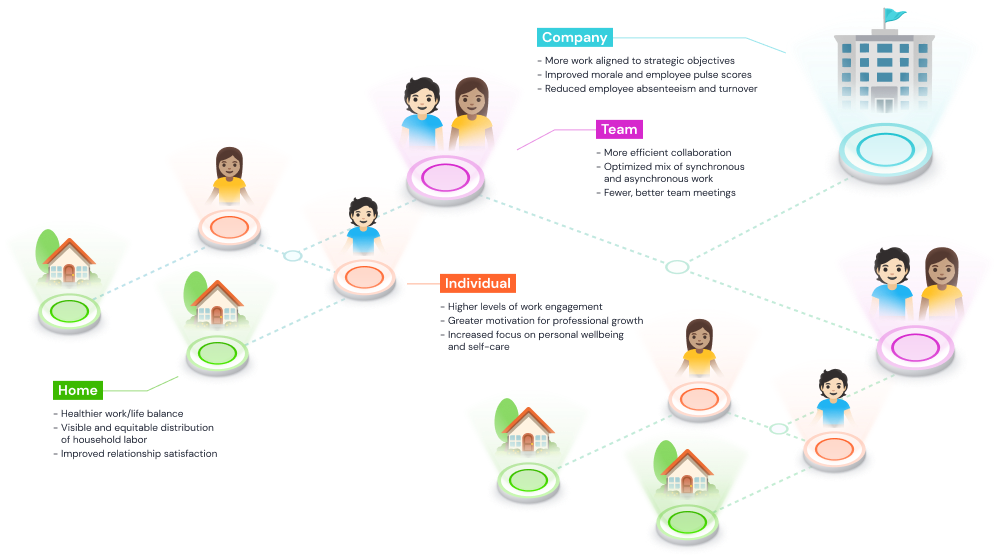
The Butterfly Effect 🦋of Adaptability & Resilience Skills
10 min
August 03, 2022 · 6 min read

In the last few months, many employers have decided that it’s time to “take a stand” on remote work. In the red corner, we have organizations like Tesla demanding that employees return to the office or be fired. In the blue, organizations like Twitter (ah the irony) loudly proclaiming that employees can work from anywhere forever. Somewhere in the middle are organizations like JP Morgan Chase, who started somewhere close to Elon, only to backtrack when employees threatened to revolt.
And that’s the challenging part about this taking a stand business. Regardless of whether it is good for them or not (and there is legitimate debate about that), and despite the awful effects of the pandemic, when you ask employees if they want the option to work out of the office, an overwhelming majority say “YES”. It turns out that if you give people a taste of freedom (in this case in terms of choosing how and where they work) they prefer that to control. Who would have thought it?
Some have chosen to frame this as a battle, one that employers are losing. And our own research indicates that many employers have a very different viewpoint on employees working out of the office.
For two years we’ve been asking employers a very simple question – “How do you feel about your employees working out of the office?” The question IS simple, but often the answer is anything but simple. As a sample, here are some of the more interesting answers we’ve received….
and perhaps most commonly
It varies by industry, but as of mid-2022, At BillionMinds we are seeing fewer than 20% of employers fully embracing a flexible work policy that includes out of office for anyone that wants it and who’s job allows it, forever. Many more are sitting on the sidelines, perhaps until the power dynamic shifts between employer and employee again and they can pull employees back in without penalty.
That might work temporarily, but it’s probably pretty foolish to make a medium term bet against history and human nature. After all one of the inbuilt effects of work from anywhere is that the number of employers employees can work for increases dramatically. If you don’t offer me the chance to work from anywhere, I’ll find an employer who does, and guess what, I won’t even have to move house to do it!
So, if you are an employer it’s probably time to go beyond gut instinct, and start thinking about how to implement a flexible workplace policy that works for your organization today and will work going forward. But how do you get started?
We recommend it starts with what we call a Space and Time Profile – an audit of your current environment to determine which roles are tightly coupled to a traditional work structure across the dimensions space and time. That may sound about as complicated as Relativity (literally) but in reality its a pretty simple organizing structure you can use to more deeply understand your organization. And it’s crucial, because despite usage of the terms hybrid and remote (terms which really describe place), the time dimension is at least as important for the majority of employees.
In your workplace, how many roles MUST be tied to location?
Probably some must be. For example if you work in a factory, its likely that there is some equipment you interact with which would look awkward at best in your dining room. Service jobs often fit into the same camp. Try serving someone dinner at a restaurant when you are sitting at home. It just wont’ work.
Even when the physics of a role does depend on proximity, there may be good business reasons for it to need certain types of role in a physical workplace. For example, it’s possible to have bookstores that are entirely online, obviating the need for physical booksellers, but an independent bookstore with a cool location and nice couches is likely to do much better fending off competition from Amazon than an online clone.
But there is a third category of role, one where the only factor causing it to be in office is culture. One example we see of this is call centers. In most cases it is cheaper and more efficient to run virtual call centers today, but many organizations still have physical ones, well, just because they always have!
In your workplace, how many roles MUST be done at a certain time?
If you are in a software company offering technical support during certain hours, working outside those hours doesn’t really make any sense. If you are a Radio presenter on a live show, you probably need to be on time..
Again there are also business reasons why working something approximating fixed hours makes sense. For example, if a large part of your work requires real time collaboration with others you need to be working at the same time as your collaborators.
But just as with the space dimension example there are potentially many roles where the only reason time constraints are observed is culture or policy. For example you may individual software developers that COULD work any time, but who are encouraged to abide by traditional office hours.
Once you have evaluated your organization across space and time, you are now in a position to create your “Space and Time Profile”, based on these two different dimensions in your organization. To illustrate this, consider two different types of organization (in this case categorized by percentage of employees in each category). The first category, we’ll call “The Nomad”. This organization has a large proportion of its employees who are not tied to the work environment at all, by either time OR place. The organization therefore has a high degree of freedom in terms of its flexible work policy.

The second category, which we will call “The Settler” has far more employees who for business reasons, or logistical reasons are tied through either time or place. This organization probably needs a different set of policies that will work for them, most likely centered around meeting the needs of those employees.

The organizational profile we described above helps you take the emotion out of WHAT is possible, but making changes based on that is far more challenging, and requires a detailed assessment of the current culture and what kind of change will work best. Bear in mind for example that just because 80% of your workforce may want to work out of the office currently, losing the other 20% could be devastating to your business. Furthermore, there is increasing evidence that the desire to work in or out of the office is strongly influenced by how many of your colleagues are doing the same.
Ultimately the choices you make will be based on optimizing for one segment of your organization (local optimization), optimizing for the full organization (global optimization) or attempting to balance the two. As you do this, you should consider what your business currently needs, what it will need in the future, the preferences of people who currently work for you, and the preferences of people who COULD be working for you in the future. But in general the more flexibility you offer in how people work, the more likely you are to get and retain the best employees.
It’s one thing to give employees the ability to work from anywhere, but its entirely another to set them up up for success when they do so. Unfortunately some employers are favoring Surveillance Technology as a means of regaining some control when workers are not in the office, but there is a much better way. If you give employees the practical skills they need to work from anywhere with excellence, and then trust them to do so – the vast majority respond in ways that benefit the business – with improved individual and team performance, reduced ethical violations and better business results.
There is another benefit we have seen with employers who adopt this policy. By giving employees the skills they need and then by trusting them to work well, they improve the overall engagement of the employee, and increase the likelihood of retaining them – something that is critical in the current labor market.
Choosing the right flexible work policy is highly complex and depends heavily on the type of business you are in, and the changes you expect to the overall business environment and your position in it.
That said, many employers today have yet to explore flexible work as a real business opportunity. For those employers that can take advantage of it, there are significant business benefits on offer, including:
If you create a workplace that embraces different work styles, give your employees the ability to do great work from anywhere AND provide the right support structures for individuals and teams, the hybrid workplace can become a significant source of competitive advantage.
——————-
BillionMinds helps build organizations that are designed for change, by providing recommendations on process, culture and technology, combined with employee and manager skills development.
If you would like more information, you can schedule a call with us here, or e-mail us at info@billionminds.com.